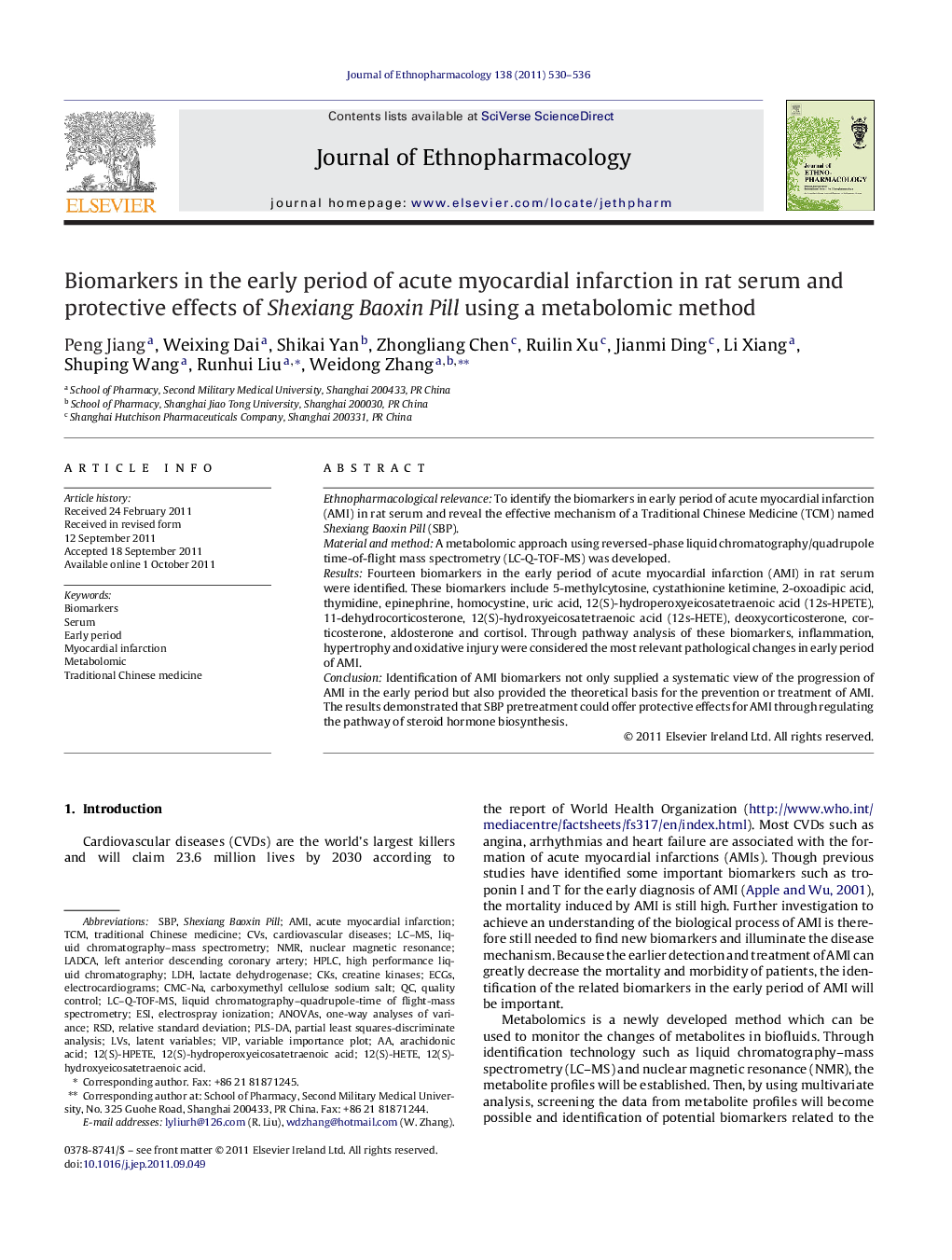| Article ID | Journal | Published Year | Pages | File Type |
|---|---|---|---|---|
| 5838968 | Journal of Ethnopharmacology | 2011 | 7 Pages |
Abstract
Ethnopharmacological relevanceTo identify the biomarkers in early period of acute myocardial infarction (AMI) in rat serum and reveal the effective mechanism of a Traditional Chinese Medicine (TCM) named Shexiang Baoxin Pill (SBP).Material and methodA metabolomic approach using reversed-phase liquid chromatography/quadrupole time-of-flight mass spectrometry (LC-Q-TOF-MS) was developed.ResultsFourteen biomarkers in the early period of acute myocardial infarction (AMI) in rat serum were identified. These biomarkers include 5-methylcytosine, cystathionine ketimine, 2-oxoadipic acid, thymidine, epinephrine, homocystine, uric acid, 12(S)-hydroperoxyeicosatetraenoic acid (12s-HPETE), 11-dehydrocorticosterone, 12(S)-hydroxyeicosatetraenoic acid (12s-HETE), deoxycorticosterone, corticosterone, aldosterone and cortisol. Through pathway analysis of these biomarkers, inflammation, hypertrophy and oxidative injury were considered the most relevant pathological changes in early period of AMI.ConclusionIdentification of AMI biomarkers not only supplied a systematic view of the progression of AMI in the early period but also provided the theoretical basis for the prevention or treatment of AMI. The results demonstrated that SBP pretreatment could offer protective effects for AMI through regulating the pathway of steroid hormone biosynthesis.
Keywords
VIP12(S)-HPETE12(S)-hydroxyeicosatetraenoic acidPartial Least Squares-Discriminate AnalysisEcGSCMC-NaLVScKSANOVAsTCMSBPCVSRSDESIPLS-DAnuclear magnetic resonance12(S)-HETEAmILC–MSMyocardial infarctionArachidonic acidElectrocardiogramsrelative standard deviationCardiovascular diseasesNMRSerumAcute myocardial infarctiontraditional Chinese medicineliquid chromatography–mass spectrometryShexiang Baoxin Pilllactate dehydrogenaseLDHMetabolomicLatent variablesBiomarkersleft anterior descending coronary arterycarboxymethyl cellulose sodium salthigh performance liquid chromatographyHPLCquality controlelectrospray ionization
Related Topics
Health Sciences
Pharmacology, Toxicology and Pharmaceutical Science
Pharmacology
Authors
Peng Jiang, Weixing Dai, Shikai Yan, Zhongliang Chen, Ruilin Xu, Jianmi Ding, Li Xiang, Shuping Wang, Runhui Liu, Weidong Zhang,
